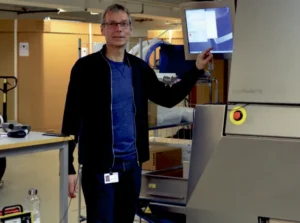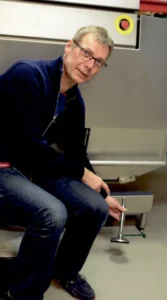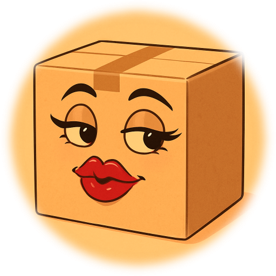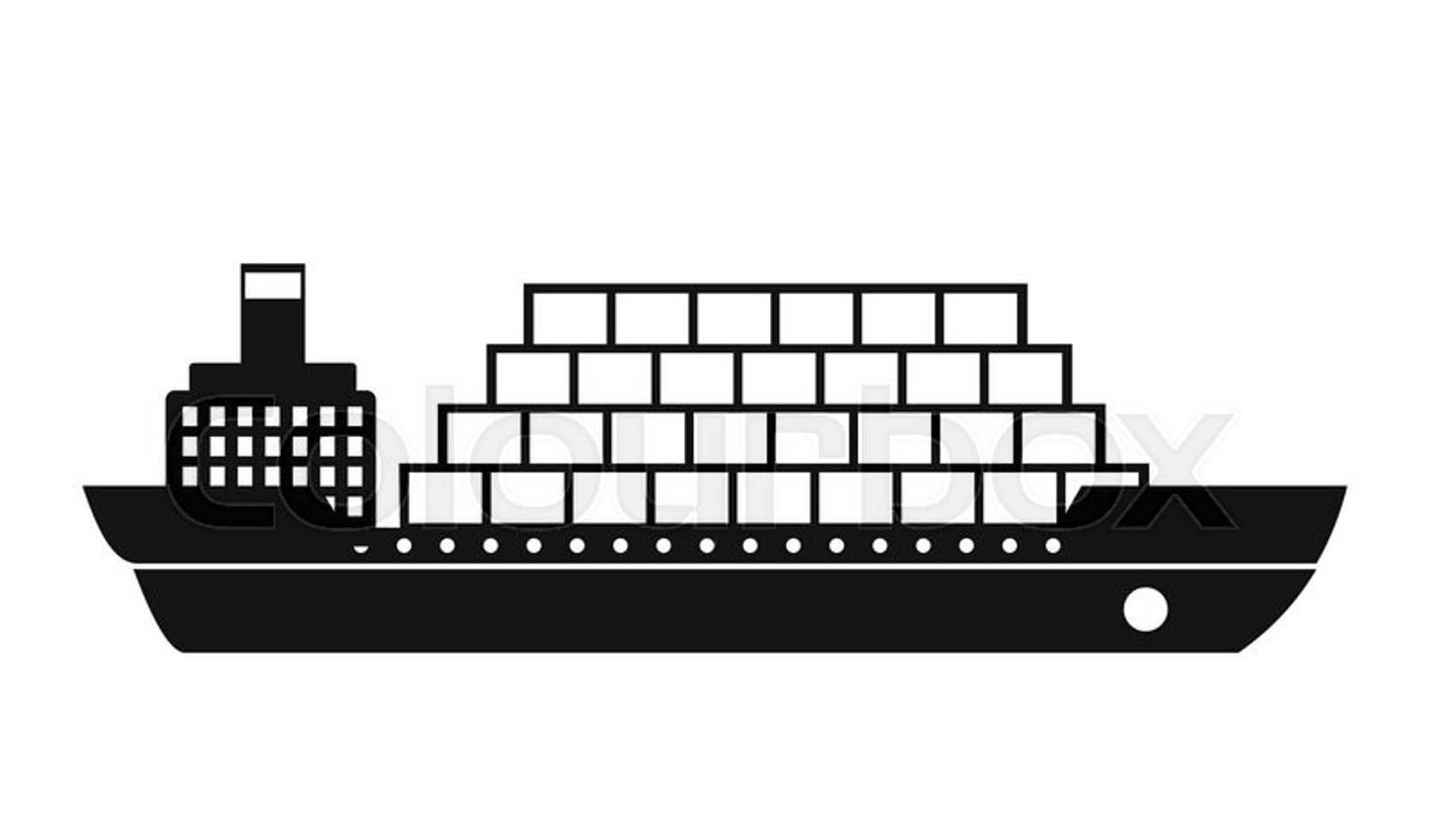Every single week all year FOSS, who are the world’s leading manufacturer of analysis instruments, is sending their “Meat-Master II” to customers all over the world. This is a machine which, with the help of X-ray equipment, can determine the fat percentage with an accuracy of less than 0.5 percent and which at the same time can spot small foreign bodies of metal, bone, glass etc. in up to 38 tons of meat per hour, whether it is fresh, frozen, or packaged.
So many tons of meat per hour obviously require a machine of a certain size, and with the second generation of our MeatMaster, the machine has reached a critical height, both when it comes to the ceiling height in our own premises, and when it comes to shipping it in a standard container, says development engineer Søren Chr. Pedersen at FOSS.
–When the machine is packed for shipment, the monitor and X-ray source are dismantled, explains Søren Chr. Pedersen
Heavy and expensive cargo
To reduce the height as much as possible, the machine – while being tested, packed, and transported, is equipped with four large industrial bolts as “legs”. In that version, the machine is 2.12 meters high, and a surface area of about 2.50 x 1.15 meters. It weighs well over a ton when fully assembled. When it is shipped, the weight is just under a ton, as the X-ray source, monitor with belonging arm, and the somewhat higher stainless steel industrial legs are packed next to it in an accessory box.
In other words, we needed a packaging, which would not add many centimeters to the pre-packaged height of the machine. It should be designed so that it would not have to be lifted over the machine, and at the same time could provide good protection for a machine that at the end-user would cost in the order of 2.5 million DKK, and which is relatively fragile goods if it overturns. Furthermore, we wanted one single operator to be able to pack the machine, which puts some limits on the packaging weight, says Søren Chr. Pedersen.
In the Heavy Duty department
The solution has ended up being made of Heavy Duty corrugated cardboard – a very Strong kind of corrugated cardboard, which is 1.5 cm think and build up of seven layers, including three corrugated layers. Foss thus started a collaboration with FARUSA Emballage A/S, which is the only manufacturer with 100% percent focus on Heavy Duty corrugated cardboard in Scandinavia, and a solution came out, that meets alle the specified requirements.
Christian Anderberg, District Manager at FARUSA, explains: It was about inventing the packaging from scratch. We ended up with a kit of parts that are assembled into a package around the machine. The solution consists of a plywood board with holes for the legs, a number of wooden blocks / joists, a bottom plate, two U-profiles and a top plate of Heavy Duty corrugated cardboard, as well as a strap band.
A normal pallet would have increased the height too much, so we opted to mount the plywood board with joists that only just lift the board so high, that the forks from a forklift can get under. At the same time, these joists also ensures that the forks from the forklift do not damage the legs that protrude through the board, he explains.
The corrugated cardboard base, which also has holes for the legs, is placed on top of the “plywood-pallet” and the machine is lifted into place. Then fold and tape up the edges of the corrugated cardboard base plate so that they form an approx. 10 cm high edge. Inside this “frame” the two U-profiles are placed so that the bottom to the U-profile forms the ends of the packaging. The long sides of the box where the U’s overlap, are locked together with Velcro. Finally, a lid is placed on top. The lid is corresponding to the bottom with flaps, which then are folded down and taped into place. Connect the strap both lengthwise and crosswise.
Tailored for a container
The machine is well protected, says Søren Chr. Pedersen, while pushing hard to one of the gables to show that the u-profiles are securely fastened inside the top- and bottom frame. We have emphasized that the packaging has a small free space between the machine and the packaging.
This also applies to the top, where there are approx. 5 cm of air, so that the packaging is 2.2 meters high. This means that it can just go into a standard container, he says and points out that almost all these machines – like FOSS’ other products – are exported. During the process of creating the new packaging, an addition was added:
– Recent development of MeatMaster II implies that the machine can be delivered with two different lengths of conveyor belts. Thus, we had to make the packaging flexible, so that it could be used for both lengths. We solved this by providing the bottom and lid with two extra bending lines. In the case where you break the innermost ones, you adjust by cutting off the excess edge, says Christian Anderberg, who has worked closely with FOSS throughout the process.
According to Søren Chr. Pedersen the development process has consisted of three or four iterations. At each iteration they met with FARUSA’s district manager, who noted what needed to be changed for the next meeting, after which he returned with new editions for testing. – And it has worked very well. It has given us as little work as possible, and it has been a good collaboration, he says.
As long as the machine is tested, packed and transported, it stands on four industrial bolts that are somewhat shorter than the industrial legs, which contributes to the fact that it can go into a standard container, explains development engineer Søren Chr. Pedersen.





